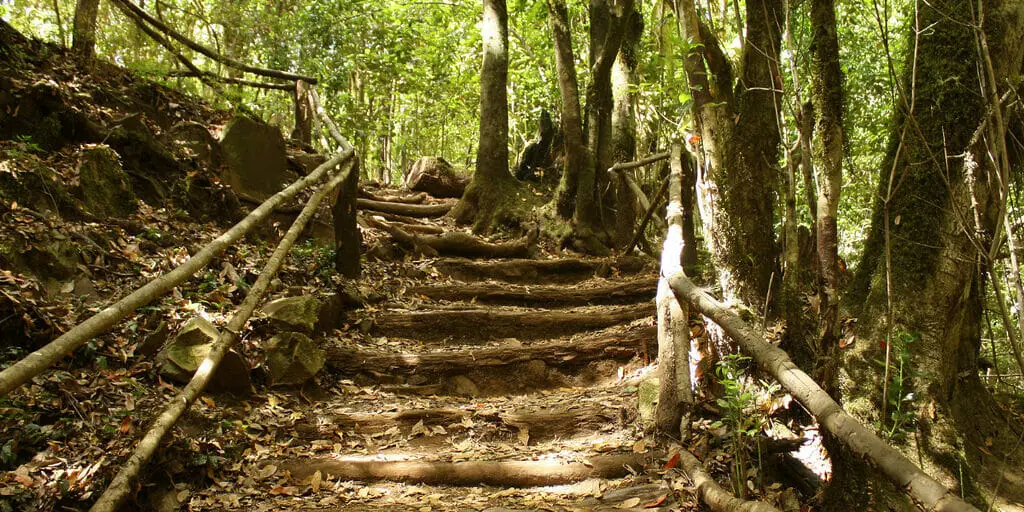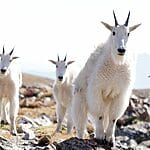6 Interesting Animals In Haiti You may not Know
Have you ever heard about the Biodiversity in Haiti?
With over 75000 interesting animals in Haiti and 6000 plant species, it is considered one of the most biodiverse countries in the West Indies near the Caribbean Islands. The country also has nine life zones, including deserts, cloud forests, mountain ranges, rivers, and streams.
Despite environmental degradation, there are still many native species and Haiti’s biodiversity. However, these native bird species can be seen in Pic Macaya National Park in the country.
Here are 6 species of interesting animals in Haiti to look out for a while diving along the coast or hiking through the mountains:
Where to Find 6 Interesting Animals in Haiti?
Here are some locations and tourist spots for interesting animals in Haiti where you might spot interesting animals in Haiti in their natural habitat:
La Visite National Park:
This park is home to many interesting animals in Haiti, including Hispaniolan solenodons, Hispaniolan trogons, and West Indian manatees. Visitors can go hiking, biking, and swimming in the park.

Cabaret Mountain Range:
This mountain range is home to a variety of animals, including Haitian bamboo and American crocodiles. Visitors can go hiking, biking, and camping in the mountain range.

Bassin Zim:
This waterfall is home to a variety of animals, including Hispaniolan parrots, Hispaniolan lizards, and Hispaniolan tree frogs. Visitors can go swimming, hiking, and rappelling near the waterfall.

Île à Vache:
This island is home to many interesting animals in Haiti including West Indian manatees, American crocodiles, and Hispaniolan pelicans. Visitors can go swimming, snorkeling, and fishing on the island.

6 Native Animals only found in Haiti
Ready to Learn about the Fascinating Animals of Haiti?
Nature never stop to surprise us. There are so many interesting animals in Haiti with distinctive features from one another. Today, in this guide, we will focus on land, water, and air animals found in Haiti.
Hispaniolan solenodon

Name: Hispaniolan solenodon
Scientific name: Solenodon paradoxus
Conservation status: Endangered Animals
Interesting fact: The only venomous mammal in the Western Hemisphere.
Found: On the island of Hispaniola, which is shared by Haiti and the Dominican Republic.
Hispaniolan solenodons is one of the interesting animals in Haiti and about the size of a large rat. They are nocturnal and have a long, flexible snout.
Hispaniolan solenodons are venomous and their saliva can kill small animals. They eat insects, snails, and other small animals. This species is marked as endangered due to habitat loss and hunting.
Hispaniolan hutia

Name: Hispaniolan hutia
Scientific name: Plagiodontia aedium
Conservation status: Endangered Animals
Interesting fact: The only living species of hutia on the island of Hispaniola.
Found: In forests and woodlands on the island of Hispaniola, which is shared by Haiti and the Dominican Republic.
Hispaniolan hutias are about the size of a large rat. They are nocturnal and have a long, flexible snout.
Hispaniolan Hutias are herbivores and eat various plants, including leaves, fruits, and roots. They are social animals and live in groups of up to 20 individuals. Hispaniolan hutias are endangered due to habitat loss and hunting.
Greater Bulldog Bat

Name: Greater Bulldog Bat
Scientific name: Noctilio leporinus
Conservation status: Least Concern
Interesting fact: The only bat species that hunts fish.
Found: In tropical lowlands and coastal areas of Central and South America.
Greater Bulldog Bats are large bats, with a wingspan of up to 2 feet. These nocturnal animals are one of the most interesting animals in Haiti and have a very loud echolocation call.
Bulldog Bats eat fish, which they catch by swooping down from the air and scooping them up with their feet.
Greater Bulldog Bats are social animals and live in colonies of up to 100 individuals. They are an important part of the ecosystem, as they help to control populations of fish.
Grey-crowned Palm-Tanager

Name: Grey-crowned Palm-Tanager
Scientific name: Phaenicophilus poliocephalus
Conservation status: Near Threatened
Interesting fact: The only palm-tanager in the world with a grey crown.
Found: In forests and woodlands on the island of Hispaniola, which is shared by Haiti and the Dominican Republic.
Grey-crowned Palm-Tanagers are about 18 cm (7.1 in) long and weigh about 27 g. They are brightly colored birds with yellow-green upperparts, a grey crown, and a black mask with white spots.
Palm-Tanager’s eat insects, fruit, and nectar. They are social birds and live in flocks of up to 20 individuals. Grey-crowned Palm-Tanagers are near threatened due to habitat loss and hunting.
Candy Cane Snail

Name: Candy Cane Snail
Scientific name: Liguus virgineus
Conservation status: Vulnerable
Interesting fact: The shell of the Candy Cane Snail is brightly colored, with white and red stripes.
Found: In Pine forests and woodlands on the island of Hispaniola, which is shared by Haiti and the Dominican Republic.
Candy Cane Snails are about 1.2-2.4 inches (3-6 cm) long. They are vulnerable due to habitat loss and overcollection.
Candy Cane Snails are interesting animals in Haiti that are well-adapted to their environment. They are brightly colored, nocturnal, and tree-living snails that are able to survive in a variety of habitats.
Candy Cane Snails are an important part of the ecosystem on the island of Hispaniola, and they play a role in dispersing lichens and other small plants.
American Crocodile

Name: American Crocodile
Scientific name: Crocodylus acutus
Conservation status: Vulnerable
Interesting fact: The American crocodile is one of the interesting animals in Haiti and largest reptile in the Western Hemisphere.
Found: In the Neotropics, from southern Mexico to northern South America.
American Crocodiles can grow up to 20 feet long and weigh up to 1,000 pounds. They are carnivores and eat a variety of animals, including fish, turtles, and mammals.
American Crocodiles are solitary animals and only come together to mate. They are vulnerable due to habitat loss and hunting.
American Crocodiles are one of the interesting animals in Haiti that are well-adapted to their environment. They are large, solitary, and carnivorous reptiles that are able to survive and burrow in a variety of habitats in Haiti.
American Crocodiles are an important part of the ecosystem in the Neotropics, and they play a role in controlling populations of fish and other animals.
Most Dangerous Animals in Haiti
The Fer-de-Lance Snake

The fer-de-lance is a venomous snake that is native to Haiti and other parts of the Caribbean Islands.
It is considered to be one of the most dangerous snakes in the world, and its bite can be fatal if left untreated. The fer-de-lance is a large snake, growing up to 6 feet in length.
It is typically black or brown in color, with a yellow or white belly. The snake is found in a variety of habitats, including forests, grasslands, and swamps.
Fer-de-lances, Haiti’s active predators during the day and night, typically burrow inside their habitats. They typically hunt small mammals, birds, and reptiles.
Largest Animal in Haiti

The American crocodile (Crocodylus acutus) is the largest animal in Haiti. It can grow up to 20 feet long and weigh up to 2,000 pounds. You can learn more about the American crocodile here.
Rarest Animal in Haiti
The Cuvier’s hutia is a rodent that is native to Haiti. It is one of the rarest animals in the world, with an estimated population of less than 1,000 individuals.
Cuvier’s hutias are threatened by deforestation, hunting, and competition from introduced species. They are nocturnal and herbivorous, and they live in small groups.
5 Critically Endangered Species in Haiti

Cuvier’s hutia
Cuvier’s hutia is one of the rarest animals in the world, with an estimated population of less than 1,000 individuals. Cuvier’s hutias are threatened by deforestation, hunting, and competition from introduced species.
Haitian solenodon:
This venomous shrew is the only venomous mammal in the Americas. Haitian solenodons are threatened by habitat loss, hunting, and competition from introduced species.
Hispaniola Amazon parrot:
This parrot is endemic to Hispaniola, and it is threatened by habitat loss, hunting, and the illegal pet trade.
Hispaniola trogon:
This bird is endemic to Hispaniola, and it is threatened by habitat loss, hunting, and poaching.
West Indian manatee:
This marine mammal, inhabiting Haiti’s coral reefs, is threatened by habitat loss, hunting, and boat strikes.
National Bird of Haiti

The Hispaniola trogon is a species of bird in the family Trogonidae. It is endemic to Hispaniola (both Haiti and the Dominican Republic) in the Caribbean. It is one of the species out of two trogon species found in the Caribbean. It is the national bird of Haiti.
The Hispaniolan trogon is a medium-sized bird, measuring about 12 inches long. It has a green back, a blue head and throat, and a red breast. The male has a white belly and a black tail, while the female has a brown belly and a white tail.
Hispaniola trogons are found in various habitats, including forests, woodlands, and gardens. They are frugivores, meaning they eat fruit, insects, and small vertebrates.
Hispaniola trogons are social birds and live in flocks of up to 12 individuals. They are often seen perched on branches, singing their melodious songs. Among the vibrant hues of the forest, they stand out with their striking green animals.
Frequently Asked Questions
What animal is only found in Haiti?
The Hispaniolan solenodon is a venomous mammal that is only found in Haiti and the Dominican Republic.
Are there any wild animals in Haiti?
Yes, Haiti has many interesting wild animals, including mammals, birds, reptiles, and amphibians.
What are 5 interesting facts about Haiti?
1. Haiti is the poorest country in the Western Hemisphere.
2. Haiti is the only country in the Western Hemisphere that speaks Haitian Creole as its official language.
3. Haiti is home to the Citadelle Laferrière, a massive fortress that was built in the early 19th century.
4. is the birthplace of the world-renowned artist Jean-Michel Basquiat.
5. Haiti is a popular tourist destination known for its beautiful beaches, lush rainforests, and vibrant culture.
Are there crocodiles in Haiti?
Yes, there are crocodiles in Haiti. The American crocodile is the largest crocodile species in the Western Hemisphere, and it can be found in both fresh and saltwater habitats in Haiti.








